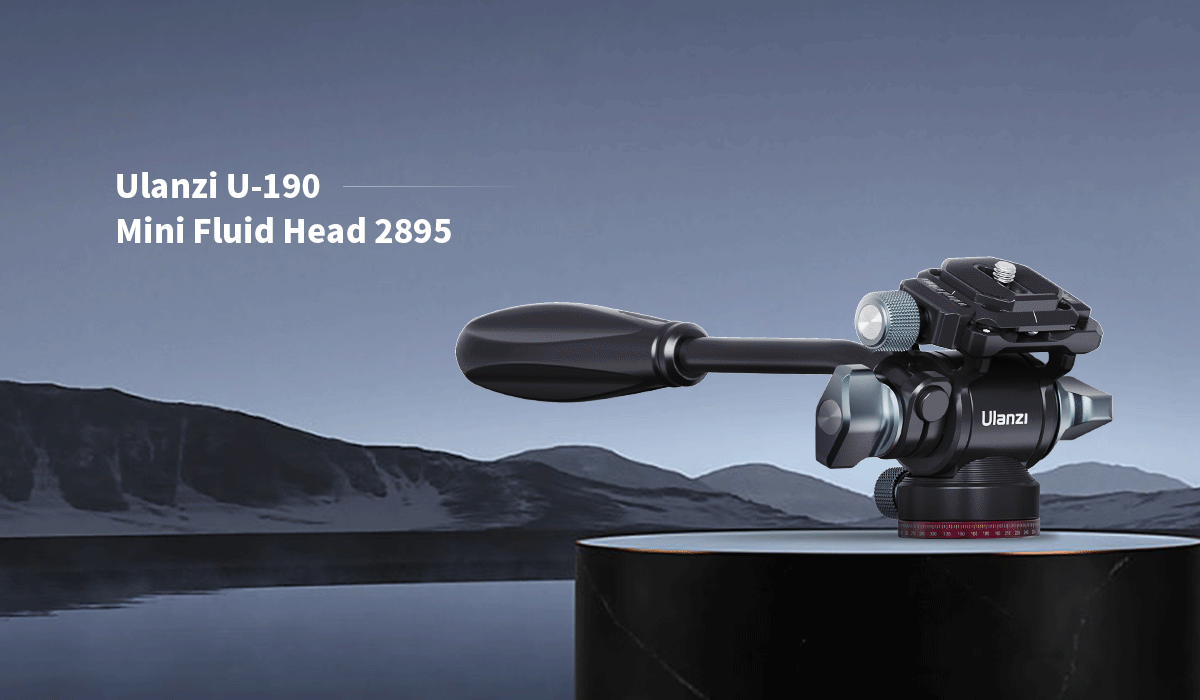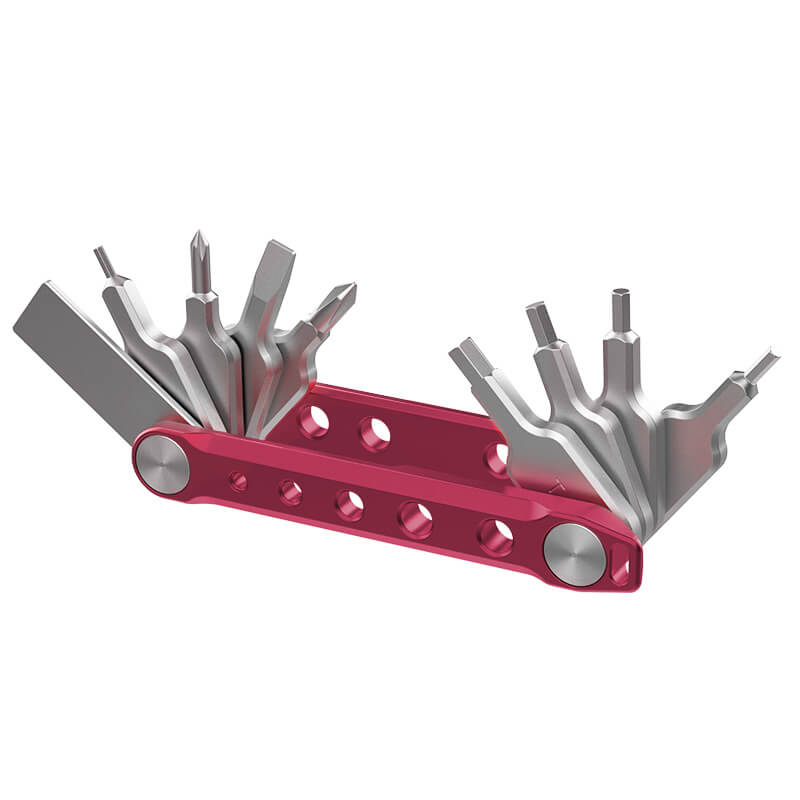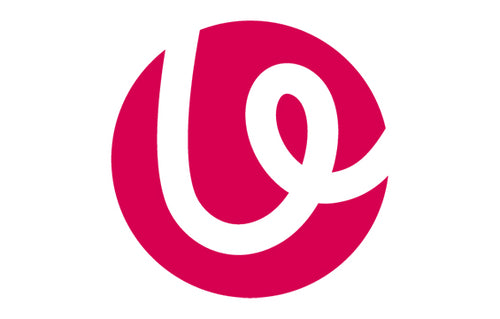A good tripod can make a huge difference in your photos and videos, but it's the little piece at the top-the tripod head-that really helps you get that perfect shot. Whether you're trying to take a beautiful sunset photo, a fast-paced sports video, or just a family portrait without the blur, choosing the right tripod head matters. We're going to explain all the different types of tripod heads out there, what they do, and how to pick the one that's just right for what you need.

What Does a Tripod Head Do for Your Camera?
What's a Tripod Head For?
A tripod head is the part that sits between your camera and the tripod legs. It gives you the flexibility to tilt, pan, and rotate your camera smoothly without shaking everything around. A solid tripod head will keep your camera steady as a rock, no matter how heavy it is or how windy it gets.
Why Does it Matter?
You might be wondering, "Can't I just screw my camera onto the tripod legs?" Well, you could, but you'd lose all the control over your camera's movement. The right tripod head lets you make small adjustments to your shot without having to move the whole tripod. That means less fiddling and more shooting.
What Are the Different Types of Tripod Heads?
1. Pan-and-Tilt Tripod Heads (Three-Way Heads)
- Design: Pan-and-tilt tripod heads typically have two separate axes of movement: horizontal pan and vertical tilt, with some models adding a third axis for lateral tilt.
- Controls: Pan-and-tilt tripod heads often have distinct handles for each axis that you can tighten or loosen to make adjustments.
- Usage: Because of their precise control, they're commonly used for still photography, landscape shots, and when composing images that require straight horizons or deliberate angles.
- Pros: Pan-and-tilt tripod heads are excellent for fine-tuning composition and are very stable.
- Cons: Theycan be slower to adjust because of the individual controls for each axis and are generally bulkier than other tripod heads.
2. Ball Tripod Heads

- Design: Ball tripod heads feature a ball-and-socket design, allowing for multi-directional adjustment in one fluid movement.
- Controls: On ball tripod heads, a single locking knob controls the movement of the ball, and once it's loosened, the camera can be moved freely.
- Usage: Ball heads are versatile and can be used for a wide variety of photography, including landscapes, portraits, and action shots. They're particularly popular among photographers who need to work quickly and reposition their cameras frequently.
- Pros: Ball tripod heads are quick to adjust, smaller, and easier to carry than pan-and-tilt tripod heads.
- Cons: Ball tripod heads are sometimes less precise than pan-and-tilt tripod heads, especially when making small adjustments.
3. Gimbal Tripod Heads
- Design: Gimbal tripod heads are specialized heads designed to balance heavy equipment like long telephoto lenses.
- Controls: The camera is mounted on an arm that pivots around its center of gravity, allowing for smooth panning and tilting motions.
- Usage: Gimbal tripod heads are most commonly used by wildlife and sports photographers who need to track moving subjects smoothly and for extended periods without experiencing arm fatigue.
- Pros: Gimbal tripod heads balance heavy equipment well and allow for fluid motion.
- Cons: Theyare large and heavy and are not necessary for lighter camera setups.
4. Fluid Tripod Heads (Video Tripod Heads)

- Design: Fluid tripod heads are similar to pan-and-tilt tripod heads but incorporate fluid cartridges in the joints to provide smooth, resistance-based movement.
- Controls: They typically have long handles for better leverage and smoother control and may have adjustable drag for both pan and tilt functions.
- Usage: Fluid tripod heads are designed primarily for video and allow for smooth pans and tilts during filming.
- Pros: Fluid tripod heads enable very smooth movements and are ideal for capturing video.
- Cons: Fluid tripod heads are typically larger and more expensive and are overkill for still photographers.
5. Geared Tripod Heads
- Design: Geared tripod heads offer precise adjustments using gears that move the camera on one or more axes.
- Controls: Features knobs that engage with the gears for minute adjustments without unlocking the head completely.
- Usage: Geared tripod heads are ideal for studio work, architectural photography, and macro photography where compositional precision is critical.
- Pros: Extremely precise; allows for micro-adjustments.
- Cons: Heavier and bulkier; adjustments are slower than with ball heads.
6. Pistol Grip Tripod Heads
- Design: Pistol grip tripod heads are a type of ball head with an ergonomic handle (pistol grip) that allows for easy repositioning.
- Controls: Squeezing the grip releases the lock on the ball, and releasing the grip locks it into place.
- Usage: Pistol grip tripod heads are great for action and wildlife photography, or any situation where you need to reposition your camera quickly.
- Pros: Very fast repositioning; intuitive to use.
- Cons: Can be less stable than traditional ball heads; may not support very heavy gear as well.
7. Panoramic Tripod Heads

- Design: Panoramic tripod heads are specialized heads designed to help photographers create seamless panoramic images. They feature a rotating base that allows the camera to pivot around the nodal point of the lens, which is essential for avoiding parallax errors when stitching together multiple images.
- Controls: Most panoramic tripod heads have a simple, single-control design. A locking knob or lever allows you to securely fix the camera in place, while a separate knob or lever enables you to rotate the camera in precise increments, often with click stops at common intervals such as 15° or 30°.
- Usage: Panoramic tripod heads are used by photographers who want to create high-quality panoramic images, whether for landscape, architectural, or interior photography.
- Pros: Enables accurate panoramics with precise rotation; prevents parallax issues.
- Cons: Primarily for panoramic use; may need extra time to set up and find the lens's nodal point; generally pricier than standard heads.
Key Considerations for Choosing a Tripod Head

Type of Photography or Videography
- For landscape photography, a pan-and-tilt or ball tripod head is often the best choice. These heads allow for precise adjustments and are excellent for capturing wide, sweeping vistas or fine-tuning compositions.
- For wildlife or sports photography, a gimbal tripod head is ideal. These heads are designed to balance heavy telephoto lenses and allow for smooth panning and tilting, making it easier to track moving subjects.
- For videography, a fluid tripod head is the best option. These heads provide smooth, resistance-based movement, which is essential for capturing professional-looking footage with minimal jitter or shakiness.
- For studio or architectural photography, a geared tripod head is an excellent choice. These heads offer precise adjustments, allowing you to fine-tune your composition and ensure that lines and angles are straight.
Weight and Size of Your Equipment
- If you have heavy equipment, such as long telephoto lenses, you'll need a tripod head that can support the weight. Gimbal heads are specifically designed for this purpose, while some high-end ball heads and pan-and-tilt heads can also handle heavier loads.
- For lighter setups, such as those used for travel or everyday photography, a ball head or pistol grip head may be more suitable. These heads are typically lighter and more compact, making them easier to carry and set up.
Speed and Ease of Use
- If you need to make quick adjustments or reposition your camera frequently, a ball head or pistol grip head is the way to go. These heads allow for fast, intuitive adjustments with minimal fuss.
- If precise adjustments are more important than speed, a pan-and-tilt head or geared head may be a better choice. These heads offer more control but may take longer to set up and adjust.
Budget
- Tripod heads come at various price points, from budget-friendly options to high-end professional models. While it's important to invest in a quality head that will support your equipment and meet your needs, it's also essential to consider your budget.
- Generally, ball heads and pan-and-tilt heads are the most affordable options, while gimbal heads, fluid heads, and geared heads tend to be more expensive.
How to Choose a Quality Tripod Head
When selecting a tripod head, it's essential to consider various factors to ensure you're getting a high-quality product that meets your needs. Here are some key aspects to keep in mind:
- Quick Release System: A good tripod head should have a reliable quick-release system that allows you to easily attach and detach your camera. Look for heads with robust, user-friendly quick-release plates that securely lock your camera in place.
- Smooth Operation:The head should allow for smooth, fluid movements when adjusting your camera's position. This is particularly important for video work, but it's also beneficial for still photography.
- Ease of Use: Consider how easy the head is to operate, especially if you need to make quick adjustments. Look for heads with intuitive controls and a design that suits your shooting style.
- Locking Mechanism: A reliable locking mechanism is crucial to keep your camera securely in place. Make sure the locks are strong, easy to engage, and do not slip under the weight of your gear.
- Independent Axis Control: For pan heads, the ability to control each axis (pan, tilt, and roll) independently is crucial for precise adjustments. Ensure that the head has separate locks for each axis and that they are easy to operate and hold securely.
- Durability:Invest in a tripod head made from high-quality materials, such as aluminum or carbon fiber, to ensure long-lasting performance. Also, consider the head's build quality and whether it can withstand the conditions in which you typically shoot.
- Compatibility: Ensure that the tripod head is compatible with your tripod legs and camera. Check the attachment system and whether the head comes with the necessary adapters or plates.
- Size and Weight: If you frequently travel or hike with your gear, consider a tripod head that is lightweight and compact. However, keep in mind that larger, heavier heads often provide better stability.
- Load Capacity: Make sure the tripod head can support the weight of your camera, lens, and any accessories you plan to use. A head with a higher load capacity will provide better stability and durability.
- Stability: A quality tripod head should be stable and minimize camera vibrations. Look for heads with sturdy construction, good dampening properties, and a wide base for better support.
Which Type of Tripod Head Is the Easiest and Quickest One to Adjust?
If you're after a tripod head that's quick and easy to adjust, the ball head is your best bet. This type of head allows for swift positioning of your camera in almost any direction by simply loosening one locking knob. Once you've got your shot lined up, tighten the same knob to secure the camera in place. The ball head's simplicity and speed make it a favorite among photographers who need to change their setup frequently and quickly, such as in wildlife, sports, or active event scenarios. Its straightforward mechanism is ideal for both beginners and professionals looking for efficiency without complication.
Pan Tripod Head vs Ball Tripod Head: Which One is Better for You?
When deciding between a pan head and a ball tripod head, consider your specific needs and the type of photography you do.

Landscape and Architectural Photography
Both pan heads and ball heads can work well for landscape and architectural photography. Pan heads offer precise control over each axis (pan, tilt, and roll), allowing you to make fine adjustments to compose your shot perfectly. Ball heads allow for quicker adjustments, which can be handy when you need to work fast to capture changing light conditions or move between different compositions.
Portrait and Studio Photography
For portrait and studio photography, pan heads are often preferred due to their precise control and ability to make small adjustments without affecting other axes. Pan heads also allow you to lock each axis independently, which can be helpful when you need to maintain a specific orientation while making adjustments.
Wildlife and Sports Photography
Ball heads are generally better for tracking moving subjects due to their quick, fluid adjustments. Ball heads also tend to have a higher load capacity, which is important when using long, heavy lenses often required for wildlife and sports photography.
Video Recording
For video recording, pan heads, especially fluid heads, are ideal for achieving smooth, controlled movements that are essential for professional-looking footage. Fluid heads use a hydraulic damping system to provide smooth, steady motion, even when making slow, precise adjustments.
Travel and Hiking
Ball heads are typically lighter, more compact, and quicker to set up, making them a convenient choice for travel. They are easier to pack and carry, making them a convenient option for photographers who need to minimize the weight and bulk of their gear. Ball heads also allow for faster adjustments, which can be useful when you need to work quickly to capture a fleeting moment or changing conditions.
The best choice depends on your individual needs and preferences. Some photographers even opt to have both types of heads to cover various shooting situations.
Are All Tripod Heads Universal?
Not all tripod heads are universal, as there are different attachment systems used by various manufacturers. However, many tripod heads are designed to be compatible with a wide range of tripod legs and cameras. The most common attachment systems are:
- 3/8"-16 Screw Port: This is the standard thread size for larger tripod heads and is compatible with most professional-grade tripod legs.
- 1/4"-20 Screw Port:This is the standard thread size for smaller tripod heads and is compatible with most consumer-grade tripod legs and cameras.
- Arca-Swiss Quick Release System: This is a widely adopted quick-release system that uses a dovetail plate attached to the camera or lens foot, which then slides into a clamp on the tripod head.
While not all tripod heads are universal, most manufacturers offer adapters or convertible plates that allow their heads to be used with different attachment systems.
Final Thoughts
By getting to know the different kinds of heads out there and thinking about what you really need – like the type of shots you want to take, how heavy your gear is, how quickly you need to adjust things, and what fits your budget – you can choose a tripod head that'll help you nail those killer shots every time. Whether you go for an all-purpose ball head, a super-precise pan head, a specialized gimbal or fluid head, or a mix of different types, getting your hands on a quality tripod head that works for you is going to take your creative process to the next level and help you get the results you've been dreaming of.






